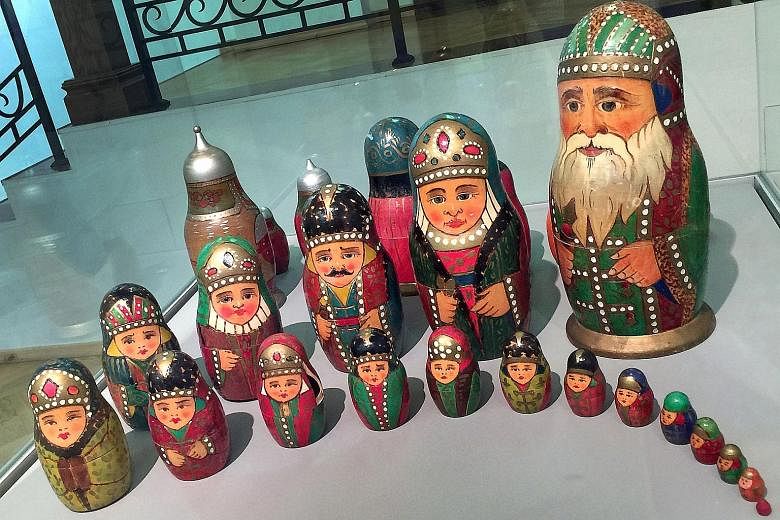MOSCOW • From peasant girls in czarist times to Soviet-era cosmonauts to today's feminist punk rock protest group Pussy Riot, the changing face of Russia's matryoshka nesting dolls reflects the country's tumultuous history.
For tourists, the dolls inside dolls are a must-buy souvenir believed to date back to a centuries-old tradition, but a new exhibition throws up some surprises.
For one thing, the idea of small dolls hidden inside larger ones appears to have originated in Japan.
In the 1890s, when the Far East was all the rage with Russia's elite, well-known industrialist Savva Mamontov brought back a set of seven deities of happiness that inspired painter Sergei Malyutin to produce a Russian version - a peasant woman with all her children inside.
The dolls caught on and were given a typical peasant name, Matryona, whose nickname is Matryoshka. At the 1900 universal exhibition in Paris, the dolls were a sensation.

"In Russia, there's a matryoshka practically in every home," museum director Yelena Titova said.
The dolls are a big part of a
Russian childhood - teaching children about culture, tradition and "basic Russian values: maternity, family, collectivism, unity and warmth", says a guide for social science teachers.
The largest known matryoshka has 100 pieces, Ms Titova said - while a standard matryoshka has six to eight. She has curated an exhibition called "No simple toy" at Moscow's Decorative Art Museum that ends in mid-September.
Under the Soviets, the matryoshka developed into a mass-produced souvenir, and by the 1950s they all looked similar - smiling and round-cheeked. But in the 1960s, in the heyday of Russia's space programme, several dolls paid tribute to Mr Yuri Gagarin and other heroes of early space exploration.
Dolls today feature sports teams or Russian and Soviet leaders or pop stars, but most are still traditional.
AGENCE FRANCE-PRESSE

